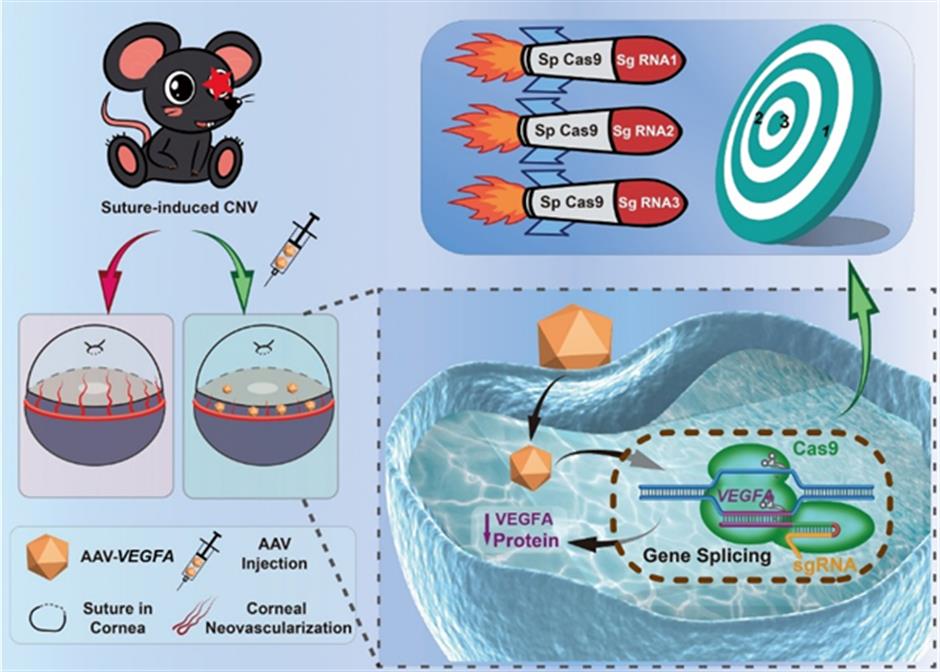Government News
Gene editing technology used to treat eye disease 2024-04-15
Local experts announced the success of using genome-editing technology to effectively control a common eye disease, which affects up to 10 percent of global population and can cause blindness for many of its patients.
Corneal neovascularization is a sight-threatening condition that introduces vascular pathology into the normally avascular cornea. This can be caused by inflammation related to infection, chemical injury, autoimmune conditions, immune hypersensitivity, post-corneal transplantation, and traumatic conditions, among other ocular pathologies. The usual treatment includes anti-inflammatory medicine and steroids, which all have limited clinical efficacy, and some eyes fail to respond to traditional treatment or have even worsened after treatments.
As vascular endothelial growth factor A, or VEGFA, plays a central role in inflammatory corneal neovascularization, experts from Fudan University's Eye, Ear, Nose and Throat Hospital said they have used advanced gene editing technology to develop a CRISPR/Cas9 genome editing system targeting VEGFA to prohibit its expression to control the disease.
The technology has been testified effective in animal experiments and the research has been published by world-leading journal Advanced Science, experts said.

This illustration shows the working mechanism of the gene-editing technology.
Gene editing is a group of technologies that enables scientists to change an organism's DNA, allowing genetic material to be added, removed or altered at particular locations in the genome.
CRISPR is a family of DNA sequences used to detect and destroy DNA from similar phages that have previously infected the organism. CRISPR sequences and Cas9 enzymes form CRISPR-Cas9 technology, a gene-editing tool that can be used to edit genes within organisms, according to Xinhua News Agency.
"This study has established a strong foundation for the treatment of corneal neovascularization via a gene editing approach for the first time, as we are able to 'cut' the key sector for neovascularization through gene editing. It provides new breakthrough and new strategy in corneal neovascularization treatment," said Dr Zhou Xingtao, a leading researcher in the study.
Source: Shanghai Daily
Application Status
| 04-16 | 21315227 | Processing |
| 03-12 | 21315226 | Processing |
| 09-26 | 21315225 | Processing |
Inquiry Status
| 02-29 | 02131558 | Received |
| 03-06 | 02131557 | Received |
| 11-14 | 02131556 | Received |
FAQ
Q: Q: Is there a place where I can get...
A: A: Log on to http://touch.shio.gov....
A: A: Log on to http://touch.shio.gov....
Q: Q: What is the easiest way to set u...
A: A: 1. Log on to http://touch.shio.g...
A: A: 1. Log on to http://touch.shio.g...
Q: Where can I get an English map of S...
A: English maps of Shanghai are availa...
A: English maps of Shanghai are availa...

